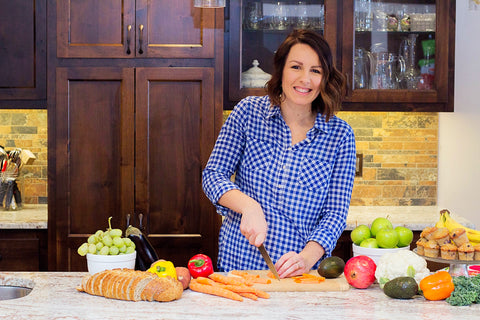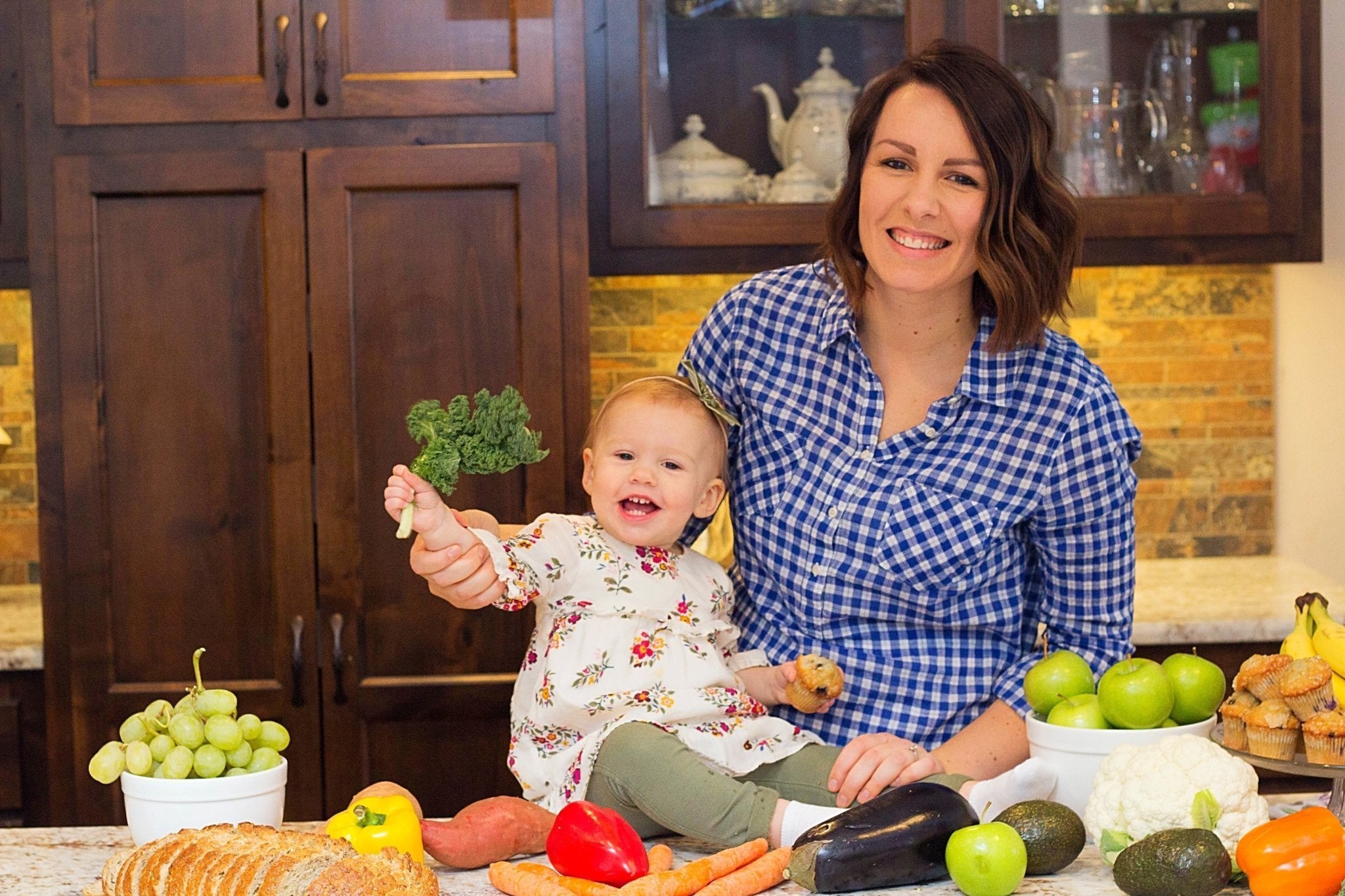
Let’s be honest, vegetables can be a hard sell for many, let alone your picky toddler. Have no fear, there are many strategies you can try that will help your toddler build a love for vegetables, well, hopefully at least a tolerance. You’ll notice I said, “Five tips to get your toddler to TRY vegetables.” That’s because the trying part comes first. It takes us ten to sometimes thirty times of simply trying a food, and in many different ways, before we know if we like it. But sometimes the harder part is simply getting your toddler to even try the vegetable you’ve worked so hard to prepare.
Remember, there’s not a magic potion they can drink to get them to like their vegetables. The only thing you can do is create a positive eating experience, continue to expose them to vegetables in a variety of ways without giving up and have patience, lots of patience. Think of some of the foods you didn’t enjoy as a child, but now have grown to love. It’s okay if your toddler doesn’t enjoy vegetables yet – keyword “yet.” However, here are a few strategies to help your toddler build a healthy relationship with vegetables and hopefully help them at least try them.

LESS IS BEST
When something is unfamiliar, it can seem overwhelming. Therefore, if we offer large or even “normal” sized portions of vegetables to our toddlers, it can seem very overwhelming and instantly they put up a wall or you find yourself dealing with a tantrum at the dinner table. Instead of offering vegetables in a “normal” sized portion, put one or two very small pieces on their plate. This may help make trying a new vegetable, not such a big deal. Along with offering an itty bitty portion, make sure not to force them to eat it or even try it. You as the parent decide what, where and when your child eats and your child then gets to choose if and how much.
PROVIDE OPTIONS
Many times food battles with toddlers are really all about power. Sometimes we have to make our toddlers think they have the power by letting them pick something out within the meal. This works best when you have a few fresh options available in your fridge, freezer or pantry. In this case, having some back up frozen steamer vegetables can be very helpful. When it comes time to make dinner, bring out two options of vegetables and simply ask your toddler: “Which one would you like for dinner?” You could even word it as: “Which one should I make for dinner?” Asking which one you should make doesn’t instantly assume that your toddler has to eat it. When dinner time comes around, you can remind your toddler of his awesome vegetable that they picked out themselves. Really try to make them feel like they have the power and get them excited about the vegetable.
HAVE THEM HELP
You may not think that a toddler can help cook dinner, but that is far from the truth. There are many ways that your toddler can help in the kitchen and this may even lead to them eating and trying more foods, especially vegetables. As stated before, having your toddler pick out and help prepare a vegetable makes eating vegetables much more exciting and makes them feel in control.
Ways to have your toddler help in the kitchen:
- Pick out a vegetable from one to three different options
- Help wash the vegetables
- Put chopped vegetables in a bowl
- Stir in oil and sprinkle on seasonings
- Set a timer for the vegetables to cook
- Press the buttons on the microwave
- Have them pick out a vegetable to try at the grocery store
ADD FLAVOR
Sometimes we all need a little help from our friends. In this case, I’m talking about Ranch, cheese or ketchup to name a few. Let’s be honest, plain, steamed veggies are not exciting, especially to a toddler. If you have to use a seasoning, dip or additional ingredient to get your toddler to simply try a vegetable, that’s okay! It’s better to eat vegetables with a little extra something than none at all. It can even be a great strategy to offer a little extra something such as oil, butter, or dips to help increase their calories. So don’t feel bad as a parent if you add a little butter, cheese or whichever ingredient works for that matter. If it makes it yummier and they try it, that’s a win!
Things to add to vegetables to get your toddler to try and maybe even enjoy them:
- Herbs and spices: salt can make most things tastier, but try using herbs and spices without salt first! If salt does work, use sparingly. BONUS IDEA: Let your toddler sprinkle it on themselves. They will most likely think this is cool and maybe more likely to then try!
- Ranch: awesome for dipping veggies or meats into.
- Greek yogurt: great substitute if you don’t want to use ranch or sour cream
- Hummus: another great vegetable dip. Works great for breads or toast as well.
- Cheese: what doesn’t taste better with cheese on it? Add to almost anything, especially roasted vegetables!
KEEP TRYING
Never give up! It takes ten to thirty times of trying a food before we may even know if we like it or not. If your toddler refuses to eat a certain vegetable after the first time you have offered it, that’s okay. Keep offering it, but instead, put a very small piece on their plate, try to offer it in different ways, don’t force them to eat it and keep a positive environment and attitude. You can even implement a “Tasting Tuesday” where someone from the family picks out new food that everyone tries. Don’t forget, it’s important that YOU are trying these vegetables and modeling healthy behaviors as well. If you aren’t trying vegetables, why would they want to?
Language to use when your toddler doesn’t want to eat something:
- “That’s okay, you don’t have to eat it.”
- “It’s okay if you don’t like (insert vegetable here) yet, you may like it when you get older.”
- “You don’t have to eat it, but do you want to smell, like or touch it?”
- “Okay. Maybe we can try again some other time.”





